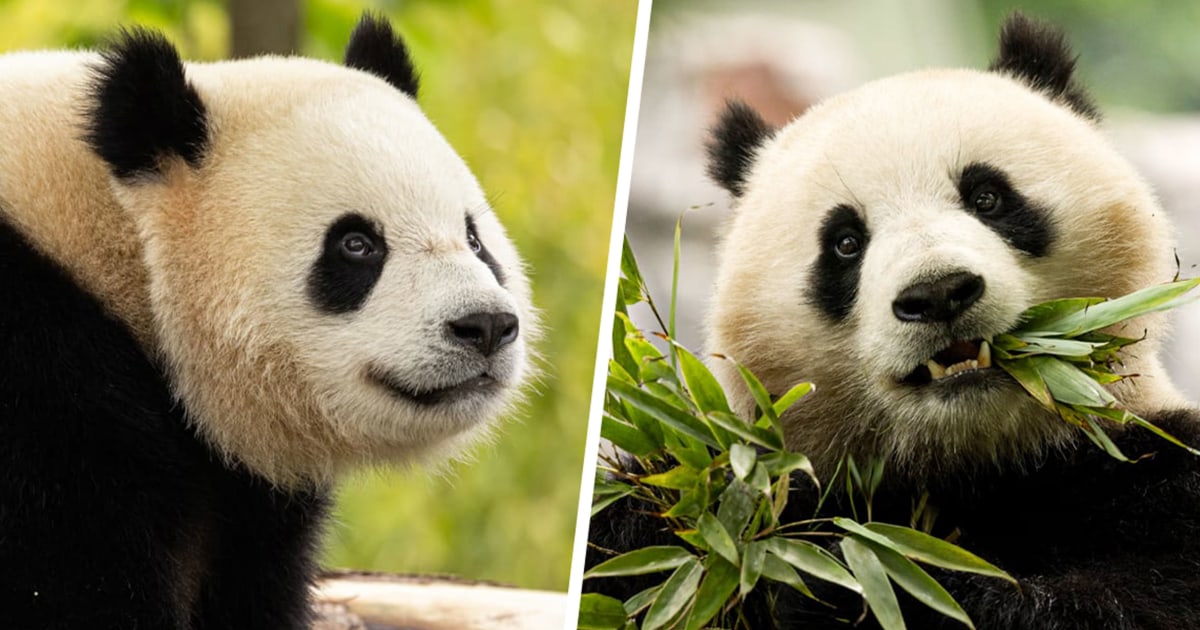HONG KONG — After a long flight, and lot of bamboo, the pandover was completed on Tuesday, with Bao Li and Qing Bao arriving at the Smithsonian’s National Zoo in Washington.
The pair of giant pandas from China will now begin a 10-year residence in the nation’s capital, weeks before the presidential election.
Bao Li, a 3-year-old male, and Qing Bao, a 3-year-old female, are the latest of their species to be sent to the U.S. after a series of repatriations from American zoos raised concerns that geopolitical tensions could be hurting “panda diplomacy,” a longtime symbol of friendship between the world’s two largest economies.
The pandas landed at Dulles International Airport in the morning and journeyed to their new home in special FedEx trucks accompanied by a motorcade that included police on motorcycles, NBC Washington reported.
On Monday, the pair left their home in the Conservation and Research Center’s Dujiangyan Panda Base in China’s southwest Sichuan province, the China Wildlife Conservation Association said in a statement.

“The pandas’ flight will be supplied with essentials like steamed corn buns, bamboo shoots, carrots, water, and medicine to meet their needs,” the statement said.
“The U.S. side dispatched three experienced keepers and veterinarians to Sichuan in advance to assist in the care of the pandas and familiarize themselves with their situation, and they will accompany the pandas on the journey,” it said.
“We believe that this new phase of U.S.-China cooperation on giant panda conservation will build upon the existing strong partnership, achieving even greater success in areas such as the prevention and treatment of major panda diseases, epidemic prevention, scientific exchanges, and contributing to panda conservation in the wild and the construction of the Giant Panda National Park,” it added.
The National Zoo has been without any pandas since last November, when adult pandas Mei Xiang and Tian Tian and their 3-year-old male cub, Xiao Qi Ji, returned to China after efforts to renew their loan agreement failed. The bears had long been one of the zoo’s main attractions, with the adult pandas having been there since 2000.
During a visit to the U.S. the same month, Chinese President Xi Jinping — who along with President Joe Biden has been working to improve U.S.-China relations after they reached their lowest point in decades — hinted that more pandas might be on the way.
In June, Yun Chuan and Xin Bao became the first pandas to enter the U.S. in decades. The pair made their public debut at the San Diego Zoo in August.
San Francisco Mayor London Breed has also said that the city’s zoo is preparing to receive its first pair of pandas from China.
The arrival of the National Zoo’s two new bears was announced in May in a video with first lady Jill Biden. As with the San Diego bears, Bao Li and Qing Bao’s departure from China was shrouded in secrecy because of security concerns, including from “toxic” panda fans who oppose sending the bears overseas out of nationalism or fear that they will be mistreated.
They left China just after the return over the weekend of four pandas from Zoo Atlanta: Lun Lun, Yang Yang and their twin cubs, Ya Lun and Xi Lun.
Beijing gave the U.S. its first two pandas in 1972 after President Richard Nixon’s historic visit to China, in what is considered a milestone in U.S.-China relations. The bears are endemic to China and viewed as a national symbol.
China leases at least 60 pandas to more than 20 countries, using the money for conservation efforts. The cost can sometimes be too much, however, with one zoo in Finland saying last month that it was returning its two bears to China ahead of schedule because of lack of funding.
Though they are no longer considered endangered, only about 1,800 pandas live in the wild today, according to the World Wildlife Foundation.








